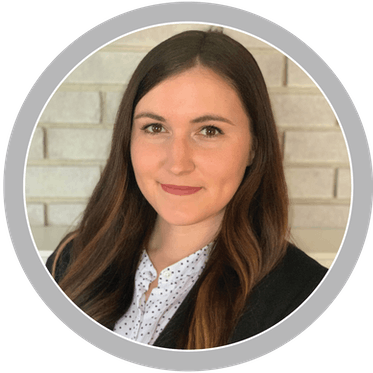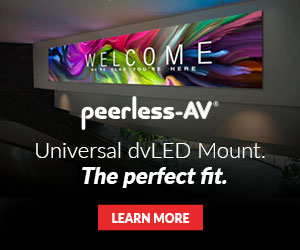Unless you’ve been living under a rock for the entirety of 2020 — though we don’t blame you if that’s what you were going for — you have probably been inundated with blogs and posts talking about the “new normal” or “these unprecedented times.” This won’t be one of those posts. Mostly. We at Sony like to refer to this time, instead, as the “new now.” Knowing what we know now (in the “new now”), there’s a lot we wished we had in the realm of technology when COVID-19 first emerged. But, as it turns out, many of the technology solutions we needed all along already existed! One of them is the REA-C1000 Edge Analytics Appliance from Sony, who must have had a premonition when it released the product prior to 2020; the REA-C1000 has been a triumphant success to enable continued meeting, teaching and worshipping together when we can’t actually physically be together.

The device uses artificial intelligence (but think more imaging and recognition and less freaky “I, Robot” movie scenes) to add upgraded features to PTZ cameras that revolutionize the presenter and audience experience — transforming how content is delivered and received. Global pandemic or not, the REA-C1000’s features, which we’ll break down below, can absolutely be put to use for hybrid applications today. What’s more, they’ll still be relevant when we are all back together and breathing the same recycled air.
Read on to see how the REA-C1000 Edge Analytics Appliance, Sony’s AI-based video analytics solution, brings us five ways to use AI in video presentation content — not just in the future but right now.
1. Handwriting Extraction Technology
Many homes are currently home to e-learning with elementary or middle school-aged kids. This presents some real challenges for the students and the teacher when trying to show complex problems or concepts to remote participants. This is a perfect example of where using AI in video makes perfect sense — to enhance education. The Handwriting Extraction feature license on the REA-C1000 can help.

Using the handwriting extraction feature would allow the presenter (the teacher) to use a standard white or black board to write on or solve problems behind them. As they finish, the REA-C1000 picks up the writing and creates an overlay in front of them on screen.
The instructor is still in the shot, standing “behind” the information and pointing out important features, without blocking the audience’s view of the information. The image above shows the overlay at around 30% opacity, but that’s adjustable based on the comfort level of the instructor/students. It can even be dialed up to 100% for camera-shy presenters.
2. Keep Presenters and Speakers in Frame At All Times
PTZ cameras have come a long way, but using AI technology alongside PTZ cameras pushes the possibilities further. Using four points of recognition — motion detection, face detection, color pattern recognition and shape recognition — the REA-C1000 uses highly accurate critical thinking to take the place of a human camera operator. The device’s PTZ Auto-Tracking feature license is as straightforward as it sounds — but where Sony has done it right is that the REA-C1000 requires no external lanyards that can be lost or broken.
The ideal application for this technology is your conference and/or house of worship cases with someone on a stage that may want to move about. Or in your lecture or training halls where, again, someone may be moving back and forth to gesture, turning their back to the audience but still remaining in the shot. The camera will pan with them as they walk back and forth, even when others join them on stage. That one-to-one relationship makes Sony’s solution unique while remaining budget-friendly, because the auto-tracking license is actually free with the purchase of the REA-C1000 until March 31, 2021. The feature will require a Sony PTZ camera (which you were probably going to use anyway, right?) due to the software coding.
3. Involve the Audience
The third REA-C1000 highlight that brings futuristic AI to video right now is its Close-Up by Gesture feature license — allowing you to involve your audience as much as you would the presenter. This is an excellent feature for the hybrid classroom or town hall, offering two points of view: one camera focused on the main presenter and another camera focused on the audience. When an audience member stands to speak, the REA-C1000 will zoom in on the speaker until they are finished and sitting down again.
4. Create Great Content — Without Specialists and Extreme Costs
Next up, possibly our favorite feature bringing AI to video presentations today, is the REA-C1000 Chroma Key-less CG Overlay: a budget-friendly way to create a studio or green screen without the green screen. With this feature, you can create amazing content in real time without a dedicated studio or specialized content creators. Using AI, the REA-C1000 can use any-color static wall to create a background of your choosing. These backgrounds can be aesthetically pleasing images, videos or even dynamic presentations. Any content, images or videos you can access with your computer, you can use as a background using this feature. Then, use your computer monitor as a focus monitor to gesture.
Why does this matter? Because having full-scale studios on-site can be incredibly — and we mean incredibly — costly: Between cameras, lighting and the real estate itself, you’re looking at five- and six-figure totals. Alternatively, many companies or individuals are choosing the “Airbnb of studio rentals” model, renting studio spaces by the hour or day. Looking at that cost structure in cities like New York City or Los Angeles, a rental studio space can be anywhere from $50 to $70 per hour for up to four people. Additional equipment — like the camera, one production light, the green screen, etc. — runs anywhere from $10 per item to $250 per item, or it’s priced per hour (source: peerspace.com).

If you’re a business that regularly produces training videos or commercials, or you wish to regularly present a professional live session but have limited resources, the REA-C1000 is the perfect middle ground between full-scale broadcast studios and third-party rentals. And the Chroma Key-less CG overlay feature is ideal for low-budget “studios” as a way to record professional-looking videos.
Sony’s solution draws anyone who wants to give the best, most immersive presentation possible while we cannot meet in person. Think of this in the context of corporate video production. Or even consider something as out of the box as a real estate professional giving a “live” tour of a space, not just on an iPhone. Taking into account the current climate of caution over contamination, owning the equipment to use at your disposal is still an invaluable resource that pays for itself over a handful of these rentals, and ten-fold over creating a full-scale production studio.
5. Focus Area Cropping
The fifth and final feature we’ll share today that allows for futuristic AI tech right now: Focus Area Cropping. This one may seem to have less of a wow factor than some of the others, but it has great importance when you or your client are trying to create a special experience for the audience and the presenter but don’t have the staff for a controller — or the budget for extra heads or other expensive hardware or software. Whether you are streaming your worship service over a web platform (which the REA-C1000 can do with its RTSP/RTMP port) or, when we are back in large groups, hosting a conference with a keynote speaker, you can be sure their movements, body language and facial expressions will be captured to emulate the full experience, no matter what.

In the “new now,” the REA-C1000 is — dare we say it, despite our earlier stated dislike for overused buzzwords — a true game-changer for so many applications; it creates impactful video presentation content that previously would have required significant time, expenses and human resources to produce. It’s hard to fit all the proof points into one story, so don’t just take our word for it: Check out this case study from the University of Hiroshima on how the school integrated Sony’s solution into its daily routine for professors teaching via multiple campuses simultaneously.
Want to learn more? Listen to this podcast on the Edge Analytics Appliance — it covers specs, use cases and more. And when you’re ready, reach out to your Almo sales rep to see a live demo of the product and get more information.
Note: The five features discussed today require the one-time purchase of a license for that feature. But good news: You get a 60-day trial for each feature with your purchase of a REA-C1000 device to test it out for yourself.

Ashley Nichols, CTS
Business Development Manager
Email: [email protected]
Toll-free: 888.420.2566 x6229
Fax: 267-350-0351








